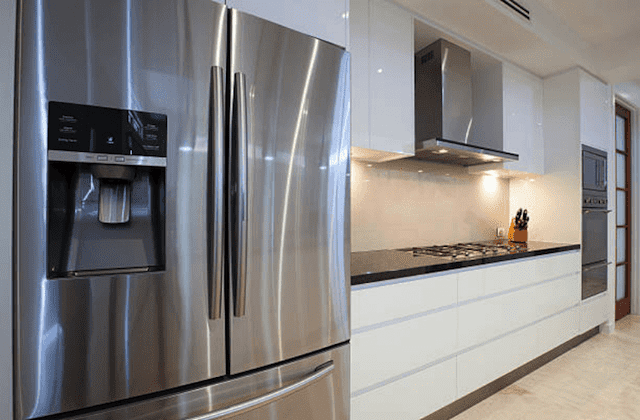Why is My Refrigerator Ice Maker Not Working?

Bell Appliance Repair provides refrigerator repair service in Florida, including professional services to fix broken ice makers. Learn about common ice maker failures below:
Ice makers are one of the most convenient inventions of all time. This is a little luxury many people certainly not appreciate. Refrigerator ice makers are relatively simple machines that don’t feature a lot of complex parts that will have issues.
As with any repair, there are some basic things that should be reviewed before assuming the worst. And, remember, if needed, you can replace the ice maker without replacing the entire fridge, depending on the model. First, let’s take a look at a couple of the reasons for an ice maker not working.
When your ice maker is making ice but it is not ejecting it it is usually a mechanical issue vs. an electrical issue. This occurs when moving food around in the freezer unit, you jam the control switch up or down. A lot of the time the ice maker might be blocked with something, even another chunk of ice. First, check to see if there is ice or food blocking this part from working properly.
Before beginning the process of clearing out the freezer, ensure the ice maker is on. This can be done by pulling the metal control arm down. Sometimes, moving food around in the freezer may put the switch into the off position. If the the switch is free, then there may be food or ice jammed inside of the ice maker or it’s not getting a good connection.
Check the Control Arm
If the control arm is down and there’s ice but it is not ejecting it, there could be a mechanical or electrical problem. This is going to need some more troubleshooting. Ready to begin? First, we need to inspect the electrical connection. This can be unplugged from the back of the freezer or refrigerator when shifting or moving the food in the freezer.
To check this, first unplug the fridge and slide from the wall. Turn off the freezer’s water supply valve. Locate the connection on the rear of the inside of the freezer. Essentially this is what plugs the ice maker into the freezer unit. Ensure that it is plugged in the right way.
Next, remove all of the ice that is in the ice maker itself. This can be completed by adding a little water to help to get the ice that is inside of there out.
Once this is done, restore power to the fridge and then turn on the ice maker. It might take the solenoid a couple of seconds to react and fill the mold. After the mold is completely full, wait around 4-5 hours to see if you have cleared the issue.
Check for Frozen Lines
More ice maker failures that might cause your ice maker to not produce any ice are frozen lines. The water lines could be blocked with frost. This is an easy fix.
Unplug the fridge and locate the water shut off valve. Turn the water off and then get a hair dryer to warm the water line or just let the fridge sit shut off for a few hours until the line is thawed.
Some brands and models that have a water filter that can clog or ice over. In these cases, finding the water filter is the first step. Then repeat what was done for the frozen line.
When an ice maker isn’t making big enough pieces of ice, there is an issue with the ice maker settings. To adjust the settings, take the top part of the cover off and find a simple control that has plus and a minus signs. To do this, you might need a flat head screwdriver.
ADDITIONAL REFRIGERATOR RESOURCES
- Refrigerator Noisy
- Refrigerator Water Dispenser Not Working
- Refrigerator Not Cooling
- How Does a Refrigerator Work?
Home Services Campaign Disclaimer: This site is a free service to assist homeowners in connecting with local service providers. All contractors/providers are independent and this site does not warrant or guarantee any work performed. It is the responsibility of the homeowner to verify that the hired contractor furnishes the necessary license and insurance required for the work being performed. All persons depicted in a photo or video are actors or models and not contractors listed on this site.
Copyright ©2025 Bell Appliance Repair
